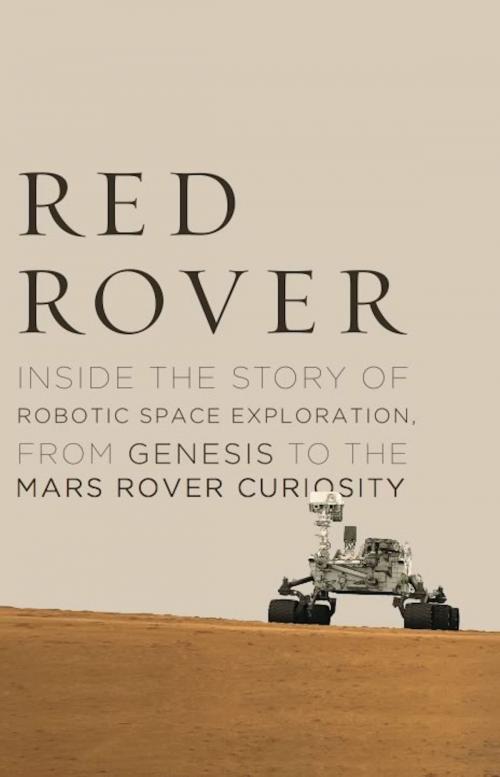Red Rover
Inside the Story of Robotic Space Exploration, from Genesis to the Mars Rover Curiosity
Nonfiction, Science & Nature, Science, Other Sciences, Scientific Instruments, Physics, Astronomy, Astrophysics & Space Science| Author: | Roger Wiens | ISBN: | 9780465051991 |
| Publisher: | Basic Books | Publication: | March 12, 2013 |
| Imprint: | Basic Books | Language: | English |
| Author: | Roger Wiens |
| ISBN: | 9780465051991 |
| Publisher: | Basic Books |
| Publication: | March 12, 2013 |
| Imprint: | Basic Books |
| Language: | English |
For centuries humankind has fantasized about life on Mars, whether it’s intelligent Martian life invading our planet (immortalized in H.G. Wells’s The War of the Worlds) or humanity colonizing Mars (the late Ray Bradbury’s The Martian Chronicles). The Red Planet’s proximity and likeness to Earth make it a magnet for our collective imagination. Yet the question of whether life exists on Mars-or has ever existed there-remains an open one. Science has not caught up to science fiction-at least not yet.
This summer we will be one step closer to finding the answer. On August 5th, Curiosity-a one-ton, Mini Cooper-sized nuclear-powered rover-is scheduled to land on Mars, with the primary mission of determining whether the red planet has ever been physically capable of supporting life. In Getting to Mars, Roger Wiens, the principal investigator for the ChemCam instrument on the rover-the main tool for measuring Mars’s past habitability-will tell the unlikely story of the development of this payload and rover now blasting towards a planet 354 million miles from Earth.
ChemCam (short for Chemistry and Camera) is an instrument onboard the Curiosity designed to vaporize and measure the chemical makeup of Martian rocks. Different elements give off uniquely colored light when zapped with a laser; the light is then read by the instrument’s spectrometer and identified. The idea is to use ChemCam to detect life-supporting elements such as carbon, nitrogen, and oxygen to evaluate whether conditions on Mars have ever been favorable for microbial life.
This is not only an inside story about sending fantastic lasers to Mars, however. It’s the story of a new era in space exploration. Starting with NASA’s introduction of the Discovery Program in 1992, smaller, scrappier, more nimble missions won out as behemoth manned projects went extinct. This strategic shift presented huge opportunities-but also presented huge risks for shutdown and failure. And as Wiens recounts, his project came close to being closed down on numerous occasions. Getting to Mars is the inspiring account of how Wiens and his team overcame incredible challenges-logistical, financial, and political-to successfully launch a rover in an effort to answer the eternal question: is there life on Mars?
For centuries humankind has fantasized about life on Mars, whether it’s intelligent Martian life invading our planet (immortalized in H.G. Wells’s The War of the Worlds) or humanity colonizing Mars (the late Ray Bradbury’s The Martian Chronicles). The Red Planet’s proximity and likeness to Earth make it a magnet for our collective imagination. Yet the question of whether life exists on Mars-or has ever existed there-remains an open one. Science has not caught up to science fiction-at least not yet.
This summer we will be one step closer to finding the answer. On August 5th, Curiosity-a one-ton, Mini Cooper-sized nuclear-powered rover-is scheduled to land on Mars, with the primary mission of determining whether the red planet has ever been physically capable of supporting life. In Getting to Mars, Roger Wiens, the principal investigator for the ChemCam instrument on the rover-the main tool for measuring Mars’s past habitability-will tell the unlikely story of the development of this payload and rover now blasting towards a planet 354 million miles from Earth.
ChemCam (short for Chemistry and Camera) is an instrument onboard the Curiosity designed to vaporize and measure the chemical makeup of Martian rocks. Different elements give off uniquely colored light when zapped with a laser; the light is then read by the instrument’s spectrometer and identified. The idea is to use ChemCam to detect life-supporting elements such as carbon, nitrogen, and oxygen to evaluate whether conditions on Mars have ever been favorable for microbial life.
This is not only an inside story about sending fantastic lasers to Mars, however. It’s the story of a new era in space exploration. Starting with NASA’s introduction of the Discovery Program in 1992, smaller, scrappier, more nimble missions won out as behemoth manned projects went extinct. This strategic shift presented huge opportunities-but also presented huge risks for shutdown and failure. And as Wiens recounts, his project came close to being closed down on numerous occasions. Getting to Mars is the inspiring account of how Wiens and his team overcame incredible challenges-logistical, financial, and political-to successfully launch a rover in an effort to answer the eternal question: is there life on Mars?















